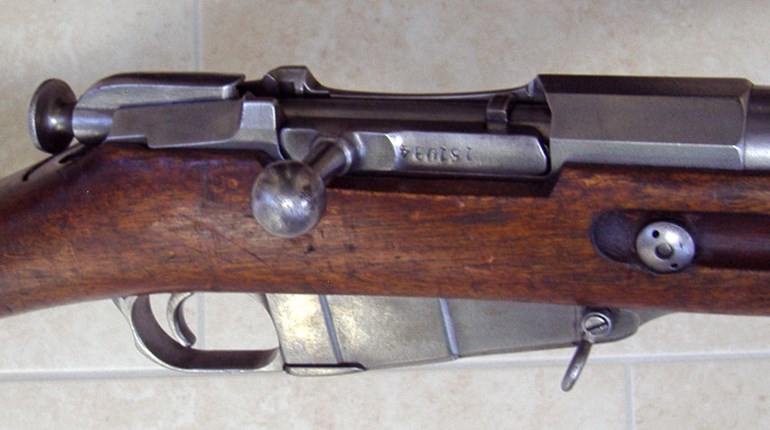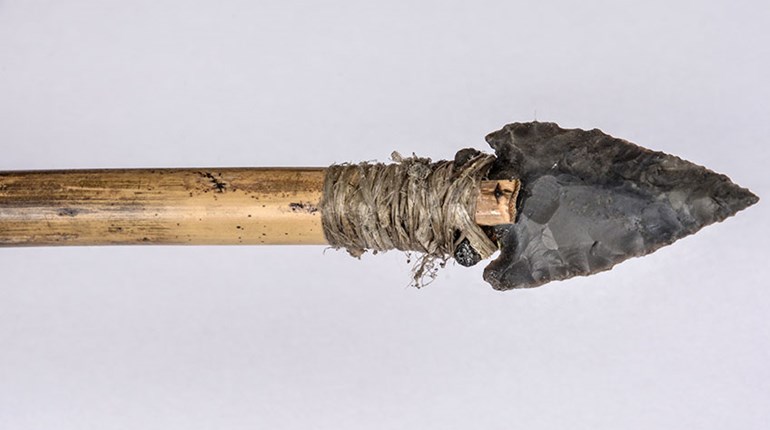
Perhaps the best thing that ever happened to the Mosin-Nagant rifle was the 2001 movie “Enemy at the Gates.” It introduced a generation of shooters to that rifle back when they were still cheap and easy to find.
On the off chance some reader is off the grid and hasn’t seen this World War II movie, let me explain. It is about the siege of Stalingrad and the horrors of that battle. I am not a war historian, so I can’t comment on the accuracy of the film or the events portrayed. But it’s a great story of the fighting spirit and a look at what the Russians endured. The scenes where the Russian peasant soldiers charge the enemy without weapons—expecting to pick up a rifle off a dead friend—are terrifying. They didn’t necessarily do it for love of country; they did it because the Russian officers would shoot them if they didn’t. To watch them being forced into these choices at gunpoint makes me appreciate American values even more.
The story centers on one of those peasants, Vasily Zaytsev (played by Jude Law), who emerges as a deadly sniper and becomes a legend around Stalingrad and throughout Russia. He gives hope to the Russians and inspires them to continue the fight.
The Germans couldn’t tolerate that, so they sent their deadliest sniper, Maj. Koenig, to kill Zaytsev and destroy the Russian morale. What followed was an epic, three-day duel between the two gunfighters.

Zaytsev had a Russian Mosin-Nagant “sniper” rifle. The Mosin-Nagant is a rifle designed in 1891 and was the primary Russian service rifle of the day. The 7.62x54 mm R cartridge it fires is still used today and is the longest-serving military cartridge in the world. In fact, It’s the only rimmed cartridge still being used by any military. In the movie, the rifle was equipped with a Russian PU Sniper Scope. Reports vary on if that scope was available or not at Stalingrad. In his book, “Notes of a Sniper,” Zaytsev is shown holding the older Model 1891/30 Sniper Rifle with the PT scope and the second model mount. But I suppose he could have upgraded during the war, or maybe Hollywood got some gun stuff wrong, as shocking as that might be.

Koenig (according to legend) was head of the German Sniper School and he showed up with a Mauser M98 in 7.92x57 Mauser (8x57 mm today) topped with a Zeiss ZF42 4X scope. In the end, Zaytsev wins, which led me to believe it was a victory of the man, not the machine.
If there is one thing the Germans have always done well, it is building guns and optics. I didn’t believe that it came close to an even match in terms of the guns they used. German engineering, manufacturing and optics vs. Soviet? No contest. It was very clear to me that the German sniper had the superior rifle—but now, I am not so sure.

I became interested in Mosin-Nagant rifles about the same time they started to become scarce. For years they were easy to find and very inexpensive to buy, often going for less than $100. But the current administration has implemented policies that have resulted in slowing or stopping the import of these rifles. There are still a lot of Mosin-Nagant rifles for sale, but prices have gone up as a result.
For example, my buddy Jason Seiple was selling them at his small shop in Belmont, VT, for $140 a year ago. Now he is getting $230, which is still an inexpensive rifle. Not to mention there are a lot of guns out there on the used gun market. I know, because I just bought one for an upcoming project for this magazine.

Sniper model guns are said to be chosen for their superior accuracy. They are fitted with a turned down, extended bolt handle and most of the 91/30 sniper guns come with the 3.5X Russian PU Sniper Scope. I wanted to find one of those to see how well the gun shot and if it could hold its own with today’s “sniper” rifles. Most of the “usual suspects” for buying a Mosin-Nagant rifle were out of stock, but I found one at Mitchell’s Mausers.
It sells true Russian sniper rifles. Many of the guns passed off as “sniper rifles” are simply 91/30 Mosin-Nagant rifles that were fitted with a scope and had the bolt handle modified. The guns from Mitchell’s Mausers are the Russian-built sniper guns. The company has a handpicked selection of these rifles, but supplies are limited.
Surplus ammo is still around for a good price, but that, too, is starting to dry up. I tested the gun with Hornady Vintage Match ammo with a 174-grain HPBT bullet in a steel case, which performed very well in my rifle. (Unfortunately, I just learned while writing this article that Hornady has discontinued the load.) Wolf has several loads for this rifle and I tested the 174-grain FMJ. As expected, the FMJ bullets didn’t shoot as well as the match bullets, but this ammo is less expensive and offers an alternative for practicing and plinking.

Finally, Norma makes cases for this cartridge for handloading. Like all Norma brass, they are wonderfully made and almost seem like overkill when compared to the steel-case cartridges normally used in Mosin-Nagant. However, they were the only reloadable cases I could find, so I ordered some and a set of RCBS dies.
The bores for these rifles are supposed to be .310 to .311 inch. Sources said that “tight-bore” rifles would shoot .308 bullets with “acceptable” accuracy, but I am of the school of thought that a tight bullet will shoot better than one that has to obturate up to fit the bore. I had some Hornady 150-grain interlock spitzer bullets in .312-inch, so I loaded them over 46 grains of Hodgdon’s Varget. This is a moderate load, about halfway between the starting load and the maximum. I wanted to be cautious with this older rifle and with the bullets being slightly oversize.

The load shot well and had no issues with pressure. I could increase the powder charge with the next batch or, because this one shot fine, just leave it alone. There is no point in beating up a vintage rifle any more than necessary trying to extract the last bit of velocity from the cartridge.
I also loaded a few Speer .311-inch 180-grain round-nose bullets over 44.0 grains of Varget. This load didn’t shoot all that well, but after shooting I noticed that the action screws were loose, which probably skewed the accuracy. I didn’t have enough of the bullets to repeat the test after I tightened the screws.
The PU scope has a bold, three-part reticle. The horizontal bar is a heavy, interrupted crosshair. Well, technically, it’s not a crosshair as it does not run all the way across and the center is open. The vertical line is a single, heavy bar that tapers to a fine point ending even with the top edge of the horizontal bars. The adjustments are a little tricky as they move the point-of-impact quite a bit with very little movement of the adjustment wheel, particularly when compared to what we are used to with modern scopes. There are no “clicks,” only bars on the adjustment wheel for reference. The elevation adjustment is designed to dial up for holdover and it has locations starting with zero through 13, which is 100 to 1,300 meters. The windage dial is, according to “The Soviet Mosin-Nagant Manual,” “marked for 10 angle divisions on both sides of zero: the marking + (plus) for adjustment to the right and the marking – (minus) for adjustment to the left. Only the 5th and 10th are numbered. The value of each division is 1/1000th of the distance.” If I understand that correctly, each line will move the point-of-impact 3.6 inches at 100 yards. In the style of scopes from that era, the adjustments move the reticle in the scope, rather than moving the image like a modern scope. So the reticle is almost always not centered in the field-of-view.

The manual says the way to focus this scope is by moving your eye closer or farther away from the scope. Lots of problems with that; the big one of course is eye relief. You pretty much have to have your eye within the limits of the eye relief to get a full view in the scope. The other problem is that it didn’t work.
Like a lot of guys my age, I need reading glasses. I can focus most modern scopes to overcome that and can shoot without correction. But with this fixed-power scope I could not find a spot where the focus was correct for me. Reading glasses were not the answer, as they made it worse. But I found that by using the 1.25X glasses I wear when working on my computer I could see fine through this scope.

The stock is designed to be used with the open sights rather than the scope, which has its optical center about 2.25 inches above the center of the bore. This requires the shooter to raise his head and place his jawbone on the stock rather than have a traditional cheek weld. While this is a preferred shooting method in some parts of the world, I don’t find it to be the best or most consistent. Also, the scope is offset to the left, so the shooter again has to compensate by moving his head position on the stock. I fixed a lot of these problems by installing a comb riser I got from the FTW Ranch shooting school in Texas. This little wonder has several different thickness pads that can be added to create the correct comb height on any rifle.
I used the tip of the pointed vertical bar for a six-o’clock hold, putting the bottom of the aiming point right on the point of the reticle, like it was balanced there. As a buddy calls it, “a lollypop on a stick.” This is the best approach, but with the pointed reticle and the questionable 1940’s Russian optics, it was difficult to shoot with precision—bullet-impact dispersion on the target was often vertical stringing. How much effect it had on accuracy is hard to tell, but I suspect that it had some.

Also, the trigger had to have some effect. It has more than half an inch of travel. It’s gritty and hard to predict when it will break, although it breaks at a consistent 5 pounds, 5 ounces, which is a bit heavy for precision work. Timney makes a replacement trigger that no doubt would help this rifle.
My best results ran about 1.5 MOA when using the protocol of five consecutive, five-shot groups at 100 yards. I have little doubt that with a better trigger and some handload development this rifle would shoot sub-MOA, which, to be honest, shocked me.
I must admit, my mind has been changed. I went into this project smugly expecting a crappy communist rifle with crappy performance. I am happy to say I was totally wrong—this warrior can still fight.
In the October issue of Shooting Illustrated we are going to make the proverbial silk purse from a sow’s ear. I have a Mosin-Nagant 91/30 rifle that I bought used. I am going to “home gunsmith” it into a sniper rifle—scope mount, optics, trigger, stock, new bolt handle and even a muzzle brake. It will be interesting to see how it all turns out.




































